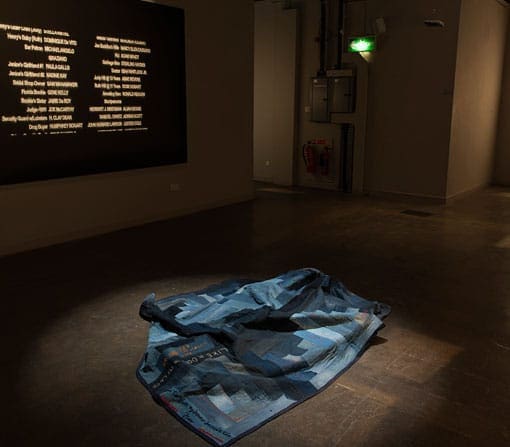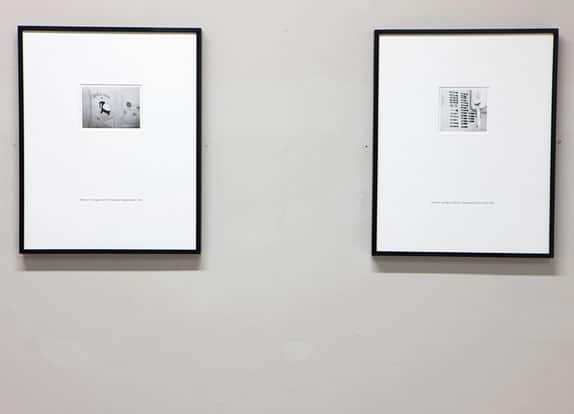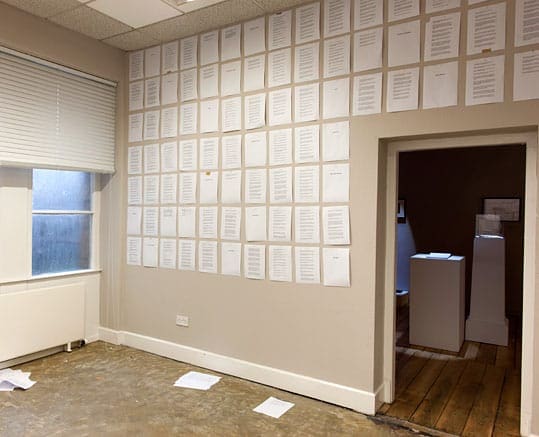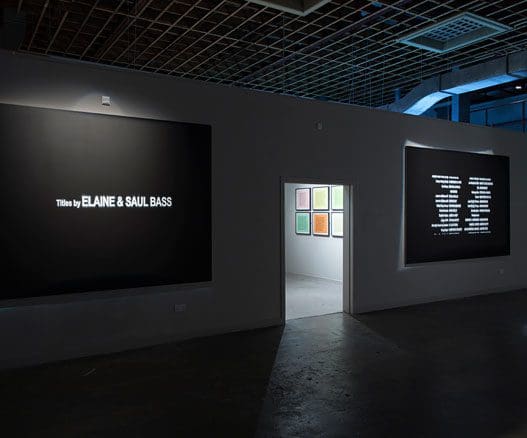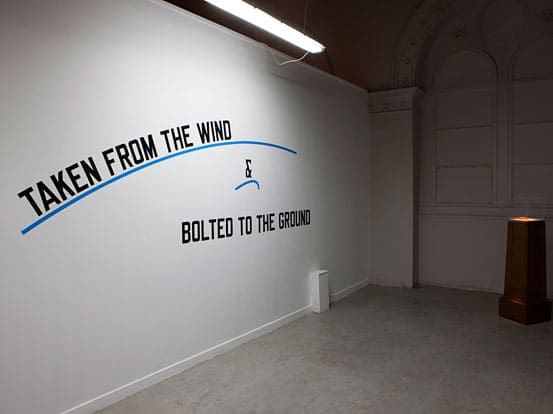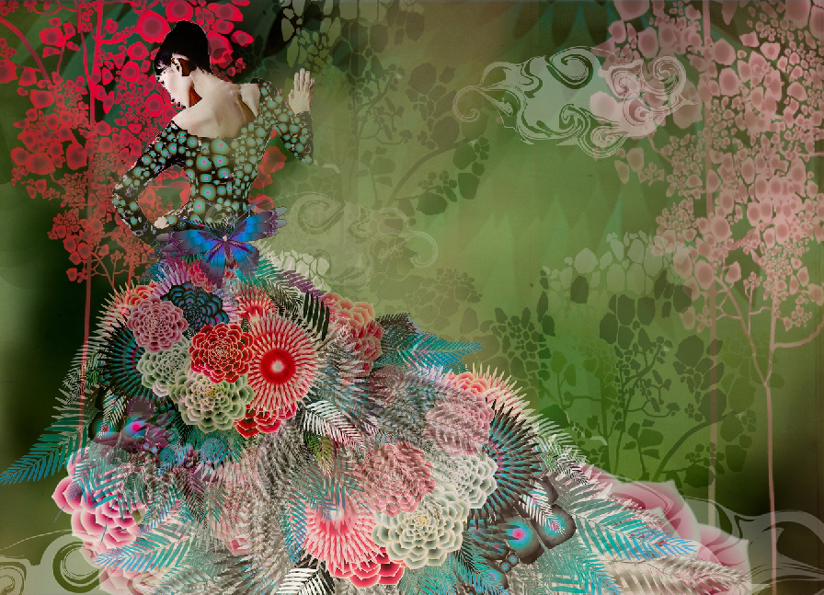The Dark Would project – a poetry/text art exhibition is currently the major winter attraction at Summerhall in Edinburgh. It fits the season – it’s a show about dying and rebirth.
FLUX magazine is the media sponsor of the exhibition and in this dedicated feature we invite noted artists and poets involved in the Dark Would project to comment on pieces that caught their attention.
On arthur+martha’s a quilt for when you are homeless
by Richard Barrett
I got out of bed this morning; came downstairs; made myself a cup of coffee; switched this laptop on and began typing these words: my usual routine on a weekend morning. The arthur+martha piece a quilt for when you are homeless does many things: asking you to take your own comfortable domestic routine a little less for granted and think about those not similarly blessed being just two of those. Stitched by homeless people and students, ie poor people, it’s in fact a very rich piece. The strips of denim make us think . . . of what? Well, the varying shades of blue suggest cold, the very thing a quilt protects against. Then we come to the traditional usage of denim as a material for workwear. Wondering about the origins of the different shades of denim we might imagine jeans, jackets and overalls bought from charity shops and flea markets. And perhaps these thoughts lead us to concerns the quilt engages with: shelter and the warmth that comes therefrom – who’s without that shelter and who has it; also, work and money.
The strips of denim forming the quilt are in a pattern of right angles. The words embroidered onto the quilt are similarly at right angles, seeming to underline the cold blues, yet when we look more closely at those embroidered words we find coldness challenged – for example ‘warm heart’ and ‘god bless us’, words and phrases picked out in delicate reds and yellows. And this points us towards another dimension of the piece, it’s surely proposing a series of oppositions. Besides those alluded to above it’s asking us to consider questions surrounding the nature of art. Is art something you experience solely behind a rope? Well, no; here we have a piece of art that you could literally, rather than just metaphorically, wrap yourself in. Also, the quilt critiqued as art/value opens up a whole other plain of thought: these days, by and large, a quilt is considered something of a luxury item fit only for the homes of people either with sufficient money to be able to afford one or sufficient time to be able to make one.
Finally, for all my talk of oppositions the quilt goes some way towards dispelling one huge one: the sadly not-uncommon view that homeless people and non-homeless people constitute an ‘us and them’. The ‘you’ in the title a quilt for when you are homeless is an address to us all, a reminder that anyone’s comfortable domestic routine can be lost, that homelessness can afflict us all.
On Fiona Banner’s Bollocks and Sperm
by Vanessa Place
Two images from two noses of two bombers, each carrying a message that betrays the anxiety of the messenger. In Bollocks, the “unfeasibly large testicles” of one Buster Gonad prove a crippling load, engulfing the phallus that charged with discharging it. Bollocks, in other words, are a load of bunk. In Sperm, thirty missile silhouettes mark the plane’s partial payoff, denoting the fact that most seed simply spills. In these mute couplings, semen doesn’t inseminate, testes attest to going bust, and thus, Banner shoots and scores. The law of the letter is that it must be held to its own insistence, to saying what it means to say. Together, Bollocks and Sperm catch out the fear and impotence confessed in every war letter, and the secret of all letters, that is, that they always reach their destination. Not because of their delivery, but because they are first written to their writers.
On Robert Fitterman’s Holocaust Museum
by Nick Thurston
The catastrophic genocide of Jewish people implemented, in the strongest sense of the word, by the fascistic antisemites of the NSDAP during the 1930s and 40s is one of the defining events of modern history. In both its grand narrative form (as ‘History’) and its plural subjective forms (as ‘histories’), we colloquially refer to this cycle of events as the Holocaust whenever someone tries to remember it, tries to forget it or tries to deny it. The political and physical techniques of victimisation and extermination that were refined so that the Nazis (as a Party and as people) could perform the Holocaust depended on objectifying both individual Jews and the collective identity of the Jewish people in lots of different and simultaneous ways. One mannerism that characterises all of those different ways is their brutality. From the house searches to the ghettoes to the cattle trains to the gas chambers, Jews (individually and collectively) were brutally objectified. How can we express any memory/ies of that?
The social history of constructing memories (and amnesias) has always taken many hard and soft forms. Museums often pretend to behave like the latter but are really exemplars of the former; and the mode of representation they have always privileged when constructing histories of the modern world (a ‘world’ that humans built, conceptually and technically) is the artefactual. They re-present things that humans made — torn from their place in the actual world through acts of archaeology — and qualify them as culturally significant. In this sense, every artefact and/or collection of artefacts is a memorial: an object freighted with the symbolic duty of focussing our memories on an event that happened elsewhere, like a scar. Therefore museology (the logic of museums) also depends on a process of objectification, albeit with different techniques from the Holocaust.
Given how museums construct their representations of memory (through extraction, taxonomisation and re-objectification) they are themselves always sites of trauma. In what ways do and do not the peculiar methods by which all museums represent artefacts actually re-objectify those things as material paradoxes (things that have been methodically identified as individual but by the same process have also been methodically same-d)?
Every museum is a technical and epistemological expression, which expresses its representations through a chorus (multi-layered, orchestrated and logical) of forms that create a discourse field. One of the most supposedly neutral, and neutralising, forms of expression common to the discourse of museums are descriptive catalogue notes, often displayed as interpretative captions. These signs are not the things themselves and captions deceptively change our proximity to the artefacts and the History that each artefact is being used to construct: they pretend to close our distance from the object and its significations, but simultaneously enforce a new distance by interpreting ‘it’ for us. In sum, they conceal the way(s) in which the artefacts themselves are reconstituted by the museum as material paradoxes — the ways in which the museum prevents artefacts from being themselves as things-in-the-world. Such captions are the makeup on the scar; and as such they’re deferrals from, rather than about, what they refer to.
Robert Fitterman’s Holocaust Museum is a relentless re-presentation of how social histories are constructed, expressed and same-d through institutional techniques of deferral and forgetting. His poem is a linguistic memorial to the objectification of modern life. It is not about the Holocaust even though it is.
On Simon Patterson’s Black-list
by Steve Giasson
At first sight, Simon Patterson’s Black-list paintings are intriguing, but not so easy to read. (ô doux miracle / de nos yeux aveugles / o sweet miracle / of our blind eyes) Because of their format and the luminescence of the text they look like film titles and credits rolling up a black screen. As art lovers, we might have in mind Patterson’s seminal piece The Great Bear in which he adapted the official map of the London Underground, replacing the names of the stations with scientists, philosophers, actors, saints and other well-knowns. So, it makes sense that the artist uses a list of names once more. As they seem to suggest art-making is tied to language – a legacy of Conceptual Art – Patterson’s Black-list paintings could be intuitively interpreted as appropriation pieces (in the spirit of Richard Prince’s Joke paintings, for example) or as a wink to Joseph Kosuth’s Art as Idea as Idea Series, which are photographic enlargements of dictionary definitions presented as white texts on black backgrounds. Then, we find that the names adorning these paintings are those of people who worked in Hollywood and were persecuted during the McCarthy anti-communist crusade in the 40’s and the 50’s. And suddenly everything becomes clearer. These new History paintings silently speak about cinema’s splendors and miseries and remind us that the American Dream is a film projection. (histoires du cinéma / histoires sans parole / histoires de la nuit / cinema histories / histories without words / histories of the night) Patterson’s Black-lists show us one of these dream endings. It is not surprising that they are still: these paintings are a memorial indeed. They are an invitation to remember, to think, to deplore, to honor. In front of these credits, for once, we should not leave the room. We should stay until the end.
On Lawrence Weiner’s TAKEN FROM THE WIND & BOLTED TO THE GROUND
by James Davies
Like other Minimalists from the 60s – Judd, Andre, Flavin and so on – Lawrence Weiner went searching for his thing, his way of doing things, his motif and then stuck to it. I use Minimalism here provocatively as it seems to be a label rarely applied to Weiner’s work. Conceptual sure but never Minimal. Just read pretty much any of the umpteen interviews conducted with Weiner and see him refute the term Conceptual. As he often says his art is not based in ideas but based in materials as empirical facts. He’d hate me calling his art Minimal too, as would famously all the other Minimalists. But here I am as critic looking (reading?) a work of art which reads TAKEN FROM THE WIND & BOLTED TO THE GROUND. Knowing what I do about Weiner’s art from LW interviews I know that for him his work is not conceptual, not about ideas but about the materials and our phenomenological relationship to them. I can go with this. If Weiner’s work was conceptual then the concept would be the same every time: LW works with materials and documents/represents this working with materials in (usually) elliptical sentences which are placed on gallery walls (as is the case with The Dark Would exhibition at Summerhall) or created as site specific works. Although method can be concept it certainly does not have to be so. LW’s work is far too visceral to be just about method.
His art has been essentially the same way, with some slight deviations, since around 1968: short sentences, representing minimal facts, seriality. As I walk round Tate Modern, Pompidou or Moma I say here’s a Pollock, there’s a Warhol, and there’s a Weiner. Can you always tell a Kosuth, a Koons, a Hirst without looking at the wall placard? In TAKEN FROM THE WIND & BOLTED TO THE GROUND LW has given us a general statement as opposed to a specific one. You take your pick on how to complete the opening of the sentence. Choose concrete propositions, insert: grass, paper or leaves. This is how LW’s art functions best. But you can have his work, and this particular piece, as metaphor too if you want. Abstract propositions, insert: life, love or guilt. Always this interaction.
But one burning question that The Dark Would asks about everyone who was in the anthology and now in the exhibition at Summerhall is how come LW’s work and the work of other text-artists is ‘not’ poetry. And conversely how come contemporary poets are ‘not’ artists? LW claims that poetry is about emotions and narrative but most poets I like don’t fit that bill. It’s not just financial reward that separates poet and text-artist, or the contextual framing they employ (which is in actual fact often similar), it’s materials, scale and placement. In Weiner’s case it’s text on a wall. The work is BIG. The work has a lot of white space round it, white space BIGGER than the human body. The work on the wall does not have masses of other LW art works around it as is the case with a poet’s work in a book. The work on the wall grows in power. The work on the wall is privileged and absorbed.
You can see more on the show at the Dark Would exhibition at Summerhall Edinburgh
All photography by Peter Dibdin


